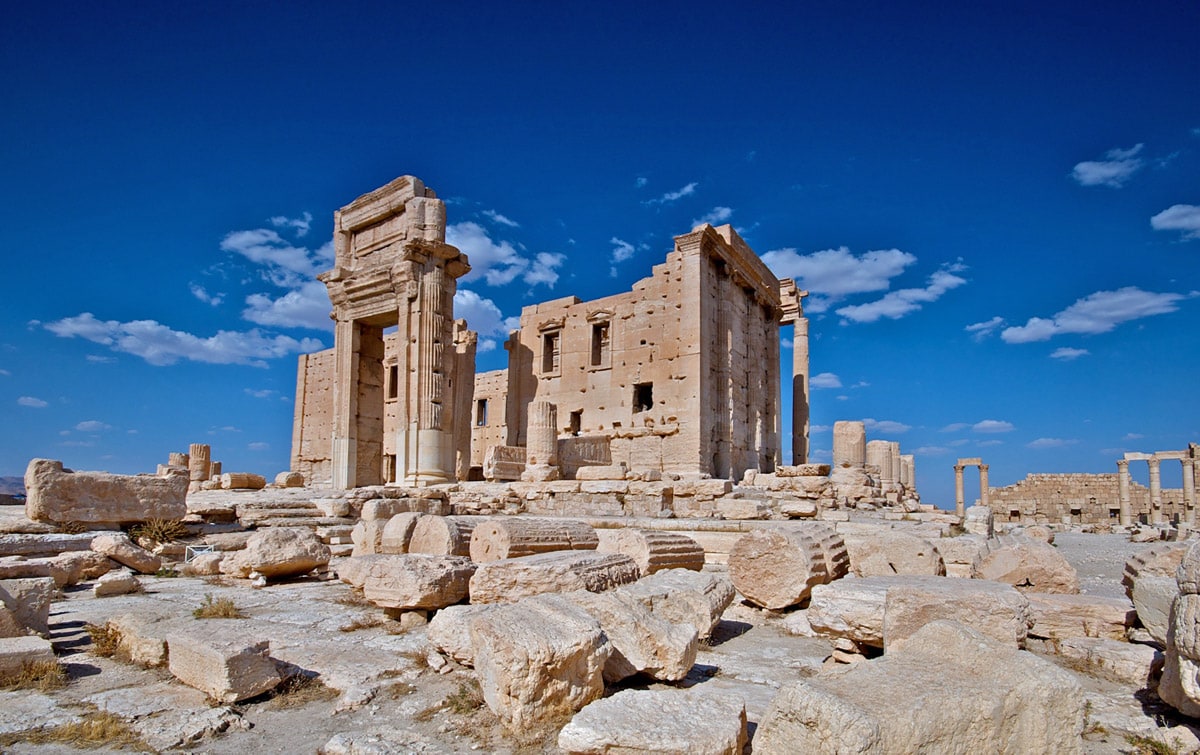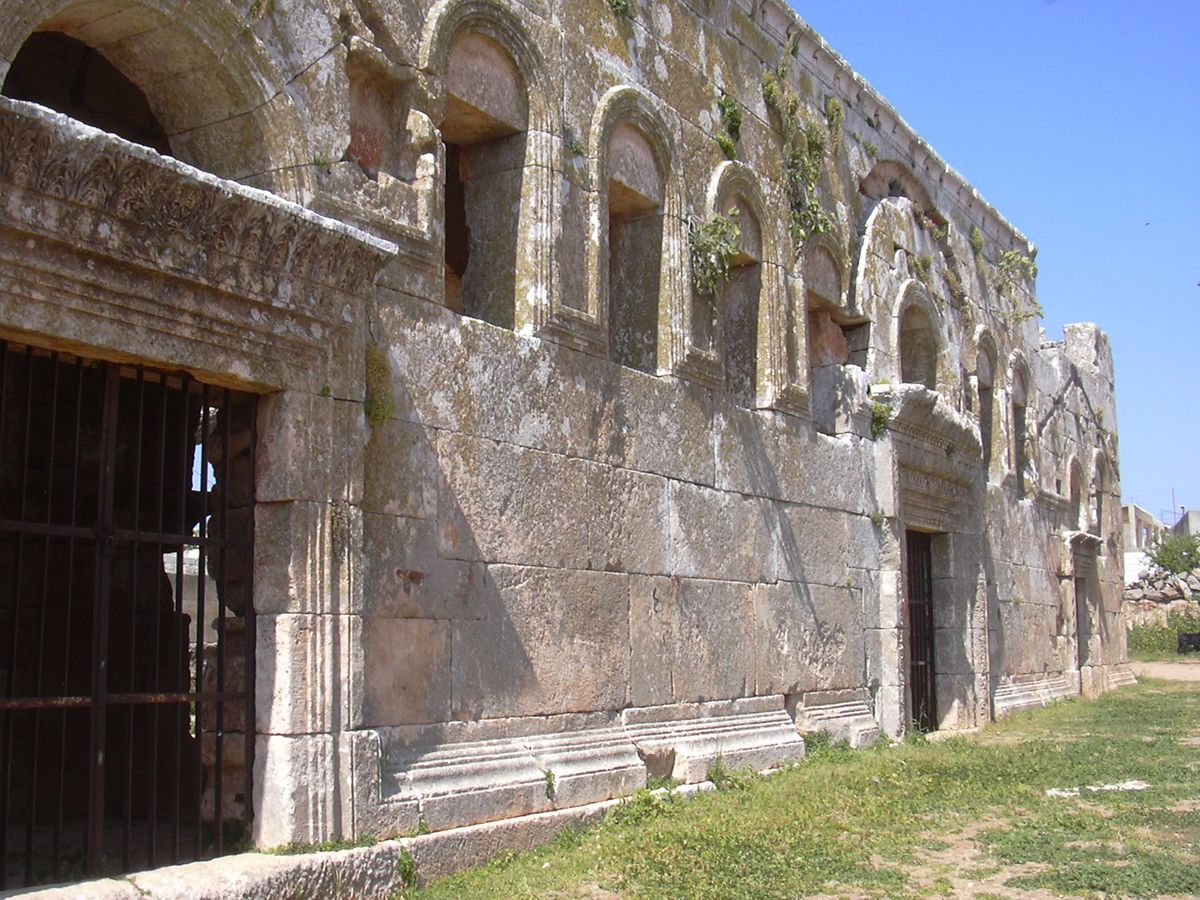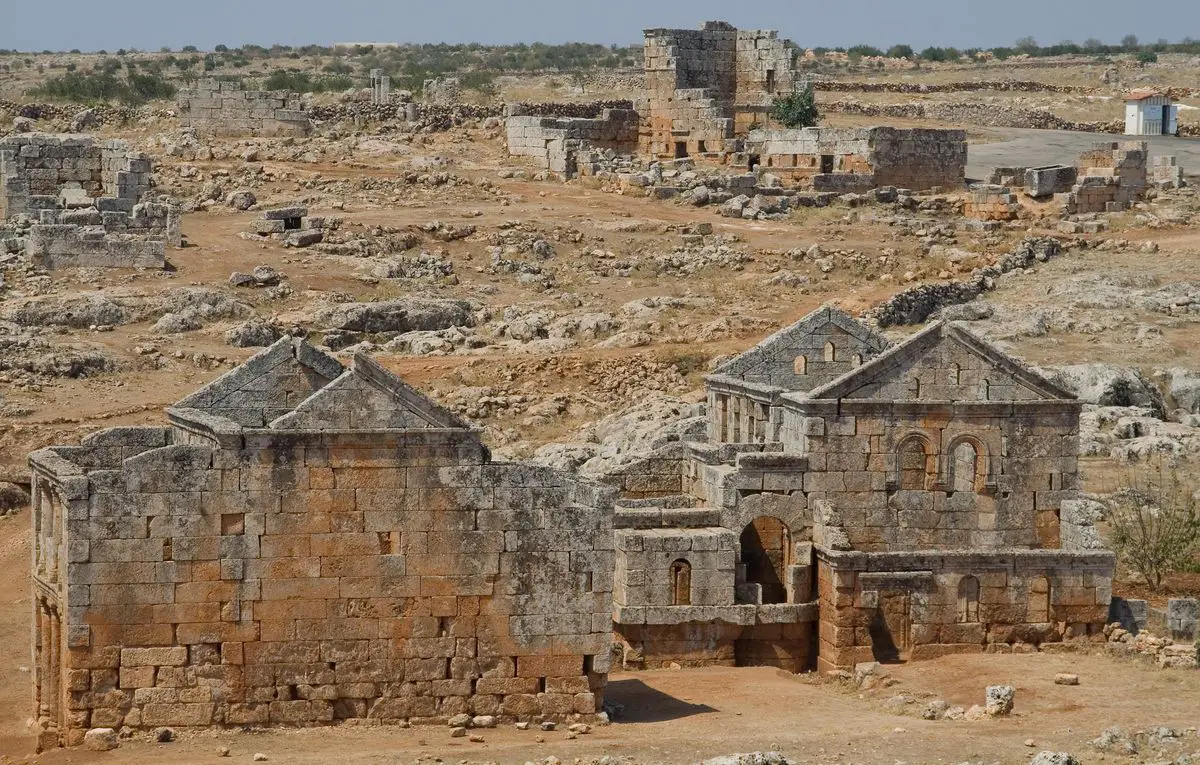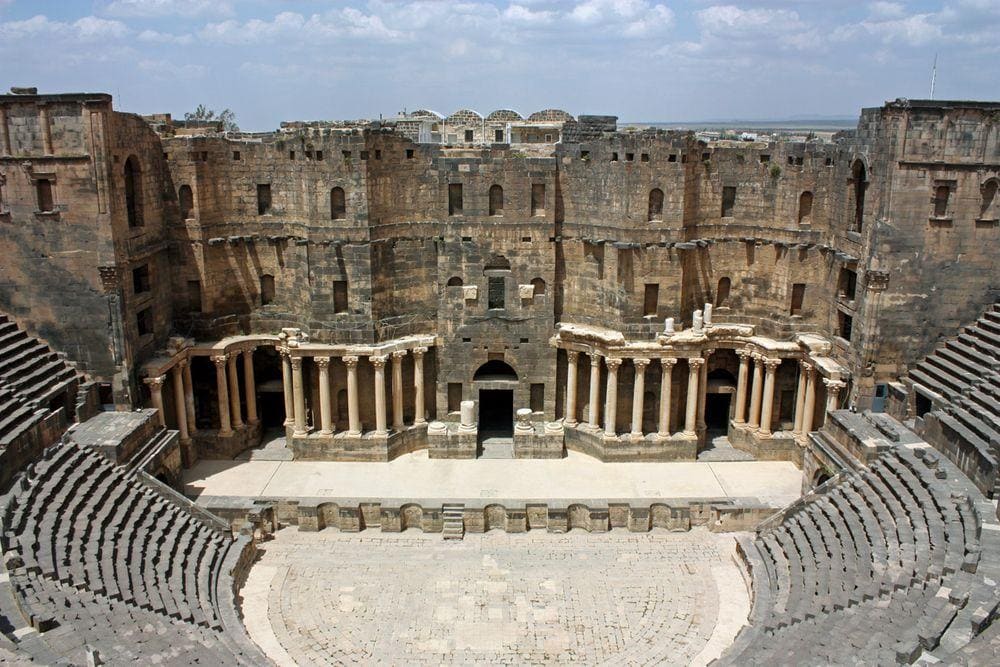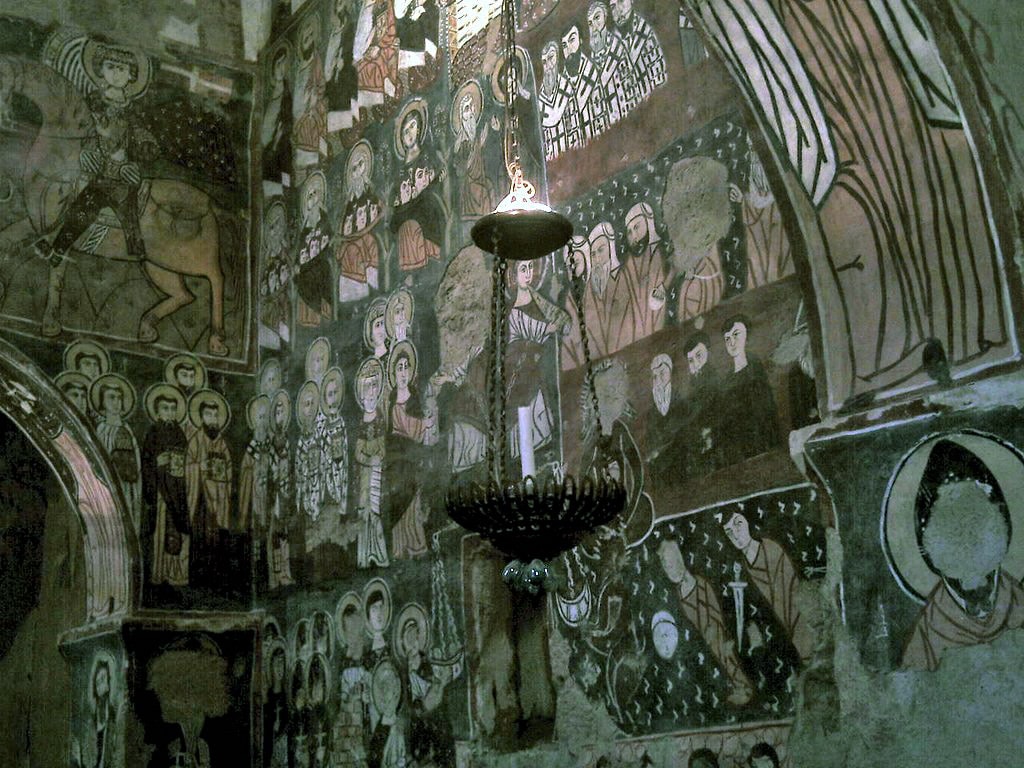Wondermondo 🢖 World 🢖 Wonders of Asia 🢖 Wonders of Syria
Territory
Wonders of Syria
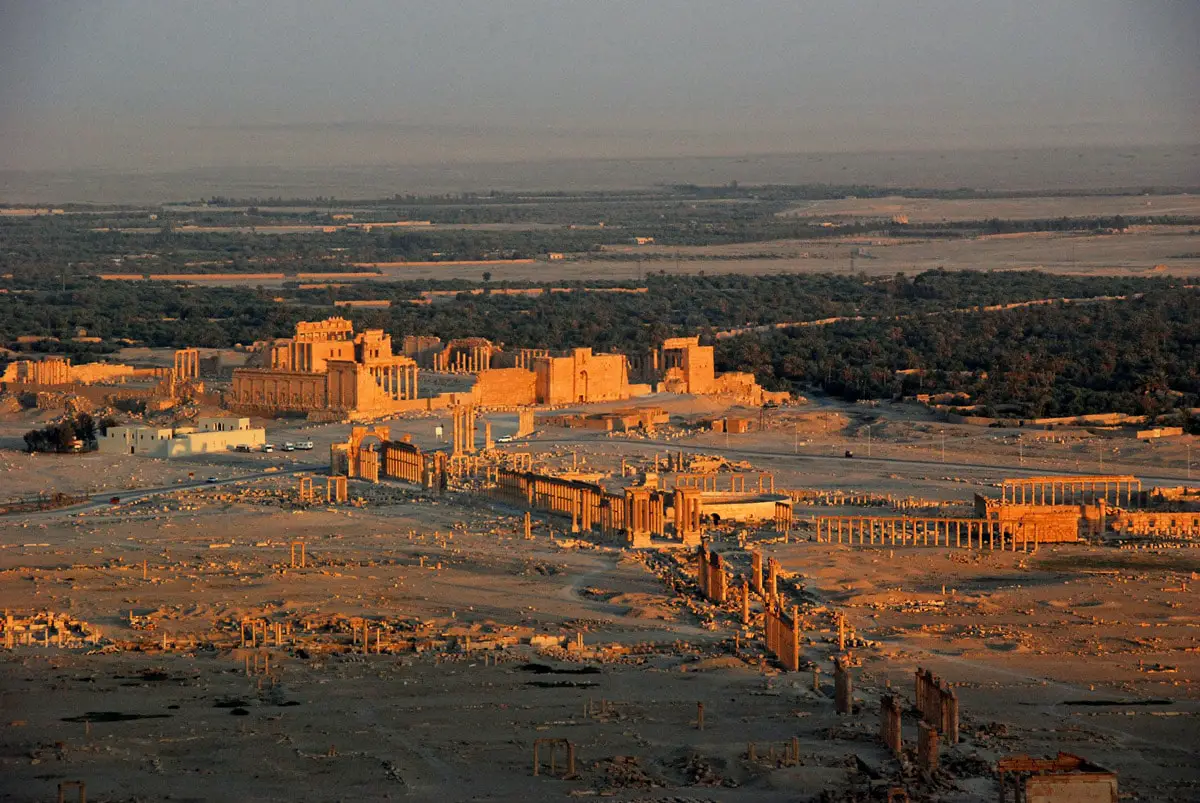
 Highlights
Highlights
The sands in Syria most likely hide many secrets which one day will tell how the civilization started on Earth. Throughout many millennia in this country appeared and disappeared many cities (it is well possible that the first cities appeared here), some persist up to this day, some are in ruins but many are covered with sand. Here are found some of the oldest fortifications, palaces, castles, and some of the oldest Christian churches.
Map with the described wonders of Syria
If you see this after your page is loaded completely, leafletJS files are missing.
 Top 25 wonders of Syria
Top 25 wonders of Syria
Archaeological wonders of Syria
Palmyra
Homs
Important ancient city – caravan stop. Existing since at least the 2nd millennia BC, abandoned after the 16th century AD. Now impressive ruins remain – the temple of Ba’al (the 1st – 2nd century AD), decumanus with arch, theater, and others. City had its own alphabet.
Shmemis (Chmemis)
Hama
Remnants of an ancient castle that was built on the top of an ancient volcano. Originally it was built in the 1st century BC but later several times rebuilt. The sight of this castle is very impressive.
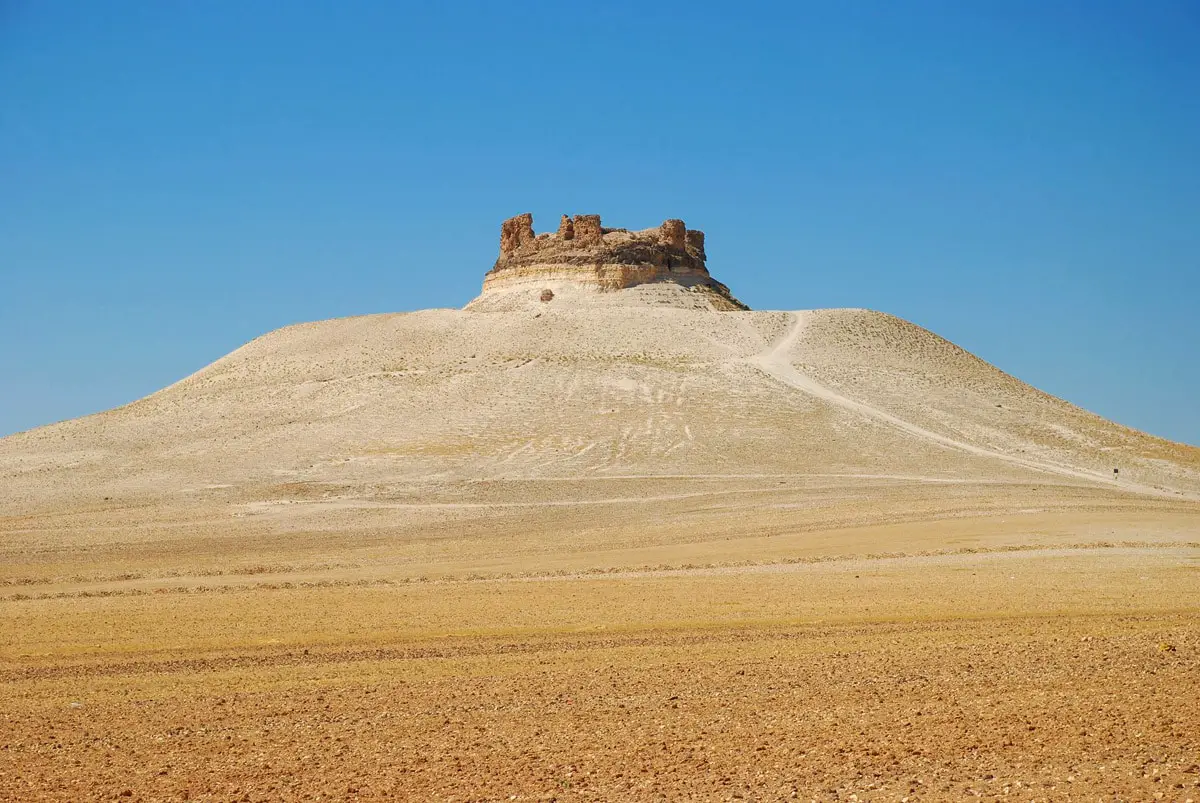
Bosra
Daraa
Ruins of an ancient metropolis, the oldest Nabatean city (the 2nd century BC). Later it became an important Roman (capital of Arabia province) and Byzantine city. Major buildings here are the Roman theater, Al-Omari Mosque, and many ancient shrines.
Dura-Europos synagogue
Deiz ez-Zor
Ruins of one of the oldest synagogues in the world, built in 244 AD. This building is adorned with wall paintings.
Ain Dara Temple
Aleppo
Remains of Iron Age temple that was active in 1300 – 740 BC (Syto-Hittite culture). Temple is similar to Solomon’s Temple as described in Bible but older. Artwork includes sculptures of lions, sphinxes, and footprints.
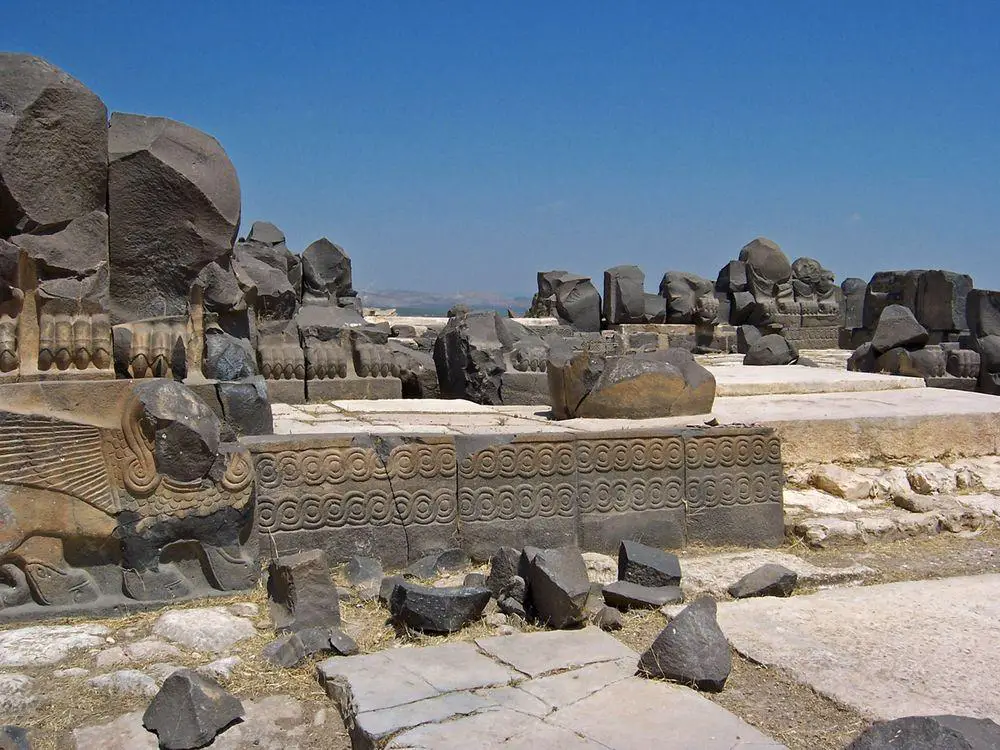
Palmyra Roman Theater
Homs
Large, well preserved, and partly renewed Roman theater. It was built in the early 1st century AD.
Rujm-el-Hiri
Quneitra
An enormous megalithic monument consisting of several concentric stone rings with more than 42 000 basalt rocks.
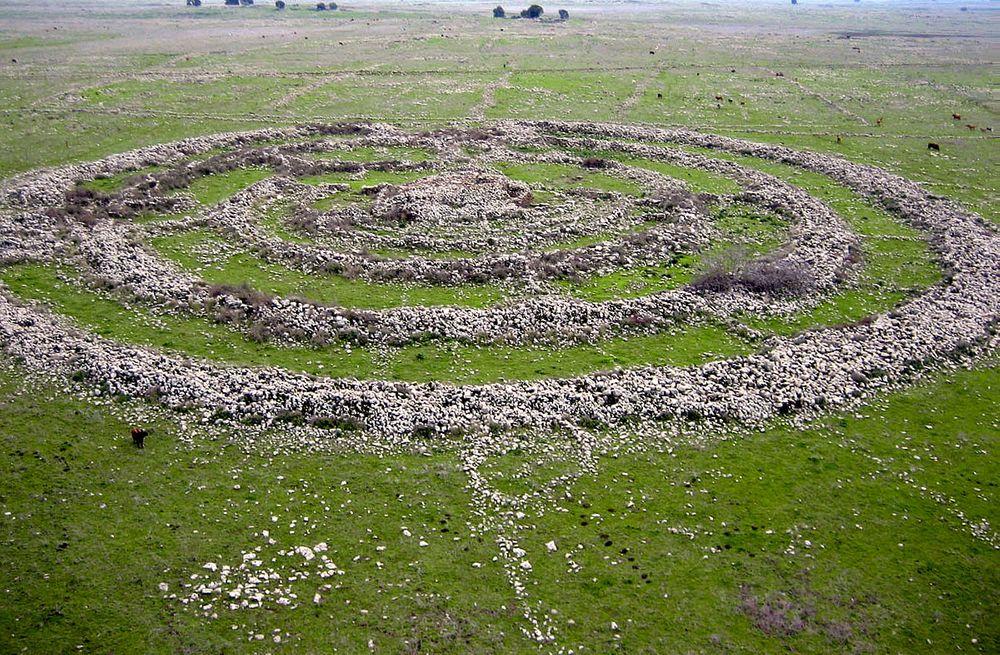
Great Colonnade of Apamea
Hama
An impressive colonnaded avenue that was built in the second century AD. Colonnade was almost 2 km long and thus – one of the most impressive ones in the Roman world.
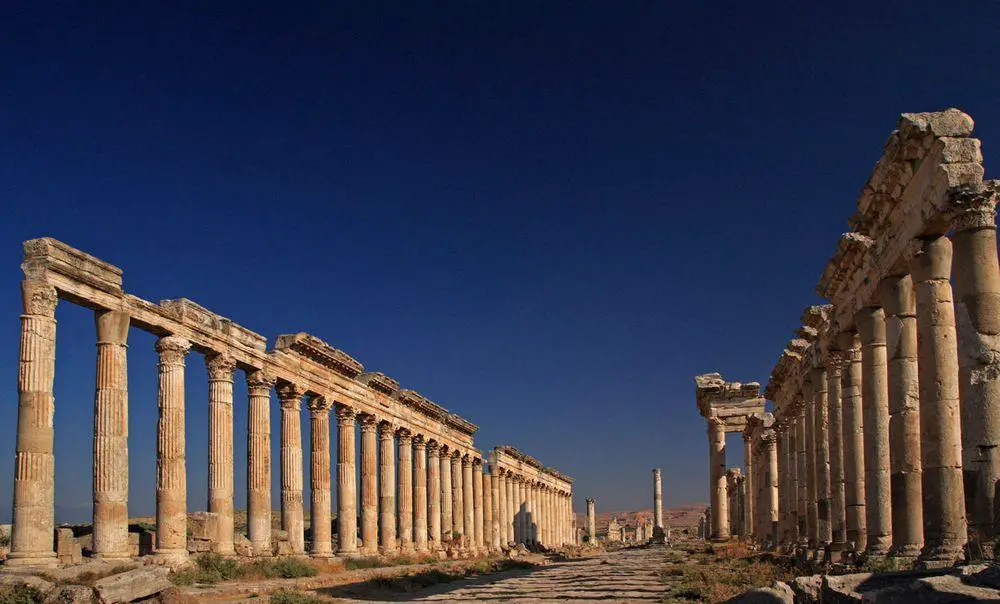
Qalb Loze Church
Idlib
One of the best preserved Byzantine churches in this region, built in the 460s AD. An early example of Romanesque architecture style.
Church of Saint Simeon Stylites
Aleppo
Ruins of an enormous church, the oldest existing Byzantine church that was built in 475 AD.
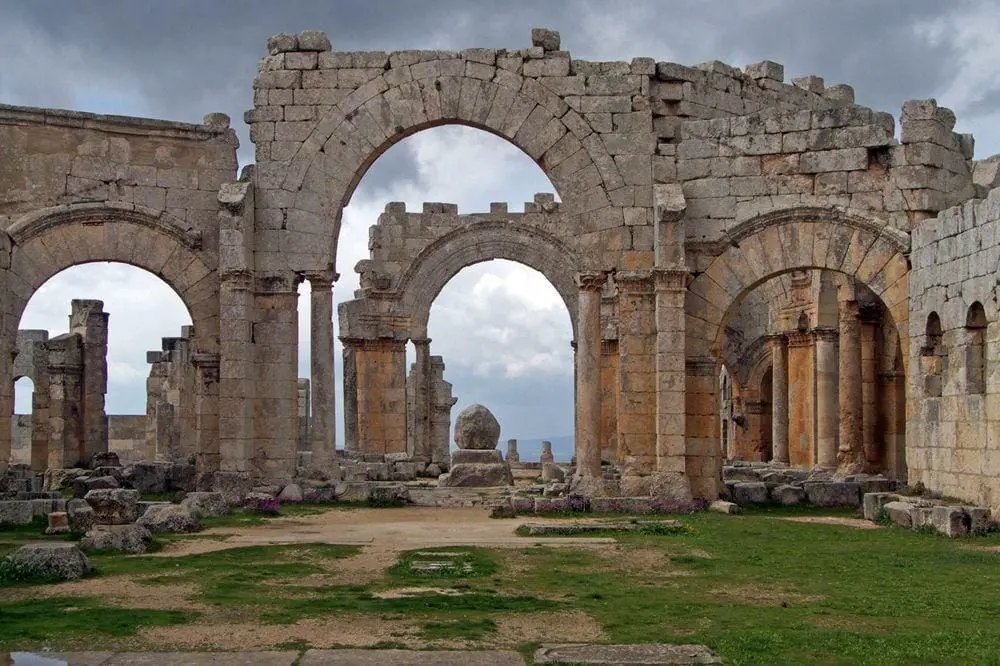
Serjilla
Idlib
This former town was founded in 473 AD by Christians and abandoned in the 7th century AD.
Bosra Roman Theater
Daraa
Large, well preserved Roman theater, built in the first half of the 2nd century AD. This was one of the largest Roman theaters ever built, with a room for 15,000 spectators.
Apamea
Hama
Ruins of the former capital city of Apamente. The city started as a fortress that was built sometime around 300 BC. The city was very rich and at some moments there were living up to 1 million people. Abandoned in the 13th century. Contains ruins of an enormous Roman theater and the impressive Great Colonnade of Apamea.
Dura-Europos house church
Deiz ez-Zor
One of the oldest Christian house churches – a family house that was converted into a church sometime around 233 – 256 AD. Possibly the oldest church in the world. It is adorned with frescoes – possibly the oldest Christian paintings.
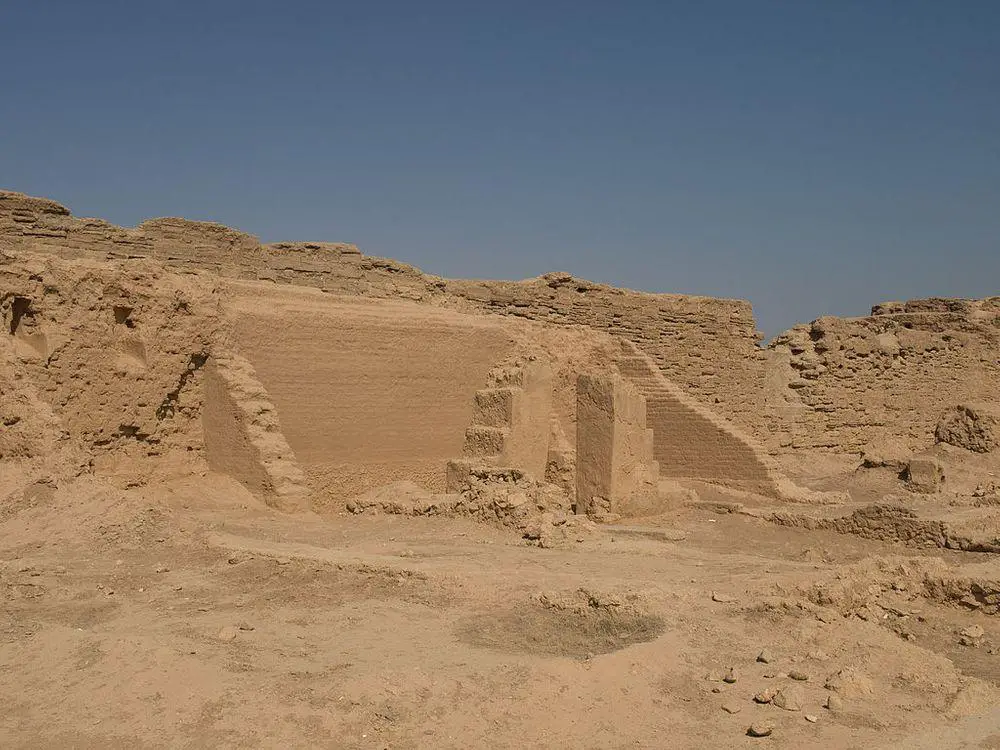
Architecture wonders of Syria
Damascus
Damascus
A very old city, inhabited since 6300 BC, developed as a city in the 3rd millennium BC. It was an important center of steel and lace production in medieval times. City has hundreds of beautiful and historically significant buildings, such as the Umayyad Mosque – one of the most significant buildings in the Near East.
Krak des Chevaliers
Homs
One of the most prominent and impressive medieval castles in the world. Kurds developed a fortress in the 11th century here, but Crusaders rebuilt it in the 1140ies – 1170 and in the 13th century.
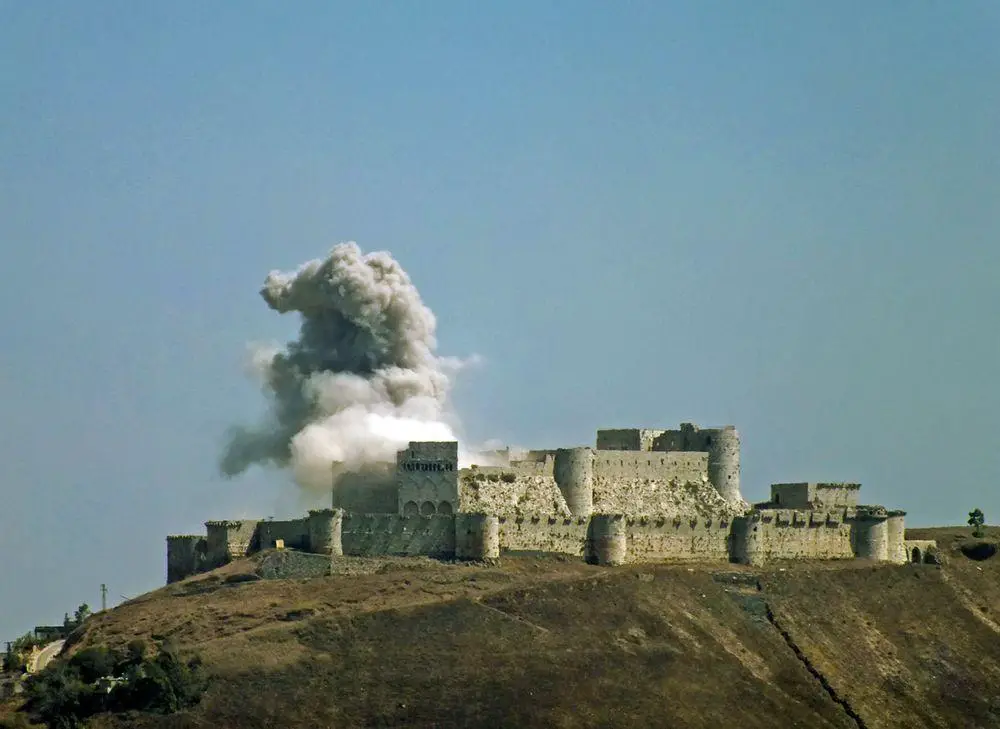
Citadel of Aleppo and Old City
Aleppo
One of the oldest continuously inhabited cities. The settlement existed here already in 6000 BC, and the development of the city started sometime around 2000 BC. The Citadel of Aleppo rises 50 m above the city and contains ruins of magnificent Arab buildings and older structures. Old City has retained its Graeco-Roman planning and contains remnants of 6th-century Christian buildings and other old structures. The urban fabric of Aleppo is distinct, with separate districts.

Umayyad Mosque
Damascus
This is one of the largest and oldest mosques in the world and is of great importance to Christians as well, reportedly containing the head of John the Baptist. It was built in 706-715 and before this time served as a church.
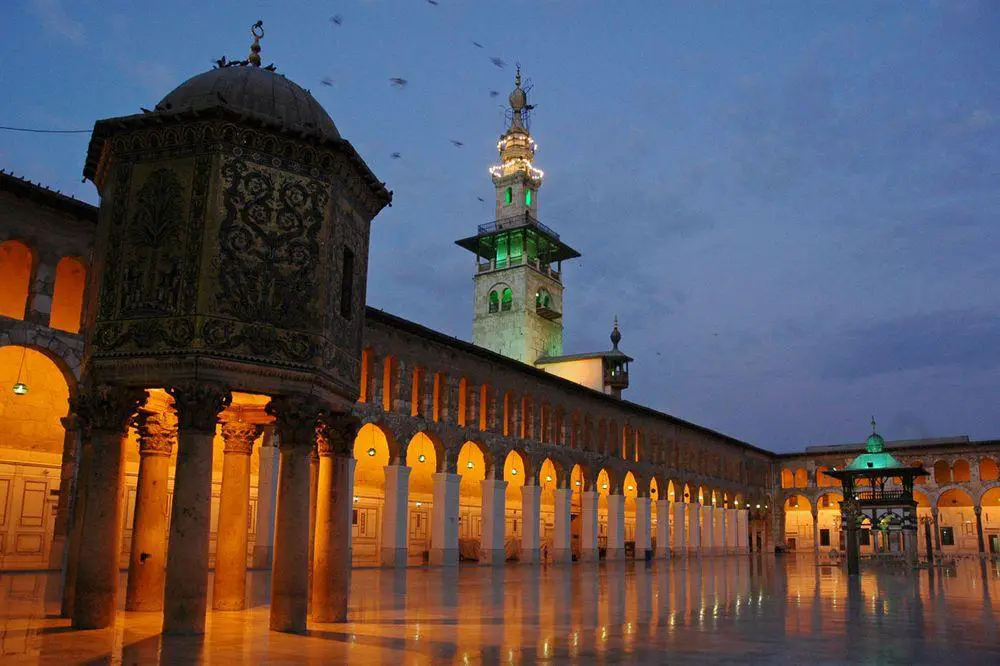
Great Mosque of Aleppo
Aleppo
This mosque was built in the 13th century on the site of an older mosque. Minaret was from 1090 or older but, unfortunately, was destroyed in 2013. According to the legend, there was buried father of John the Baptist.
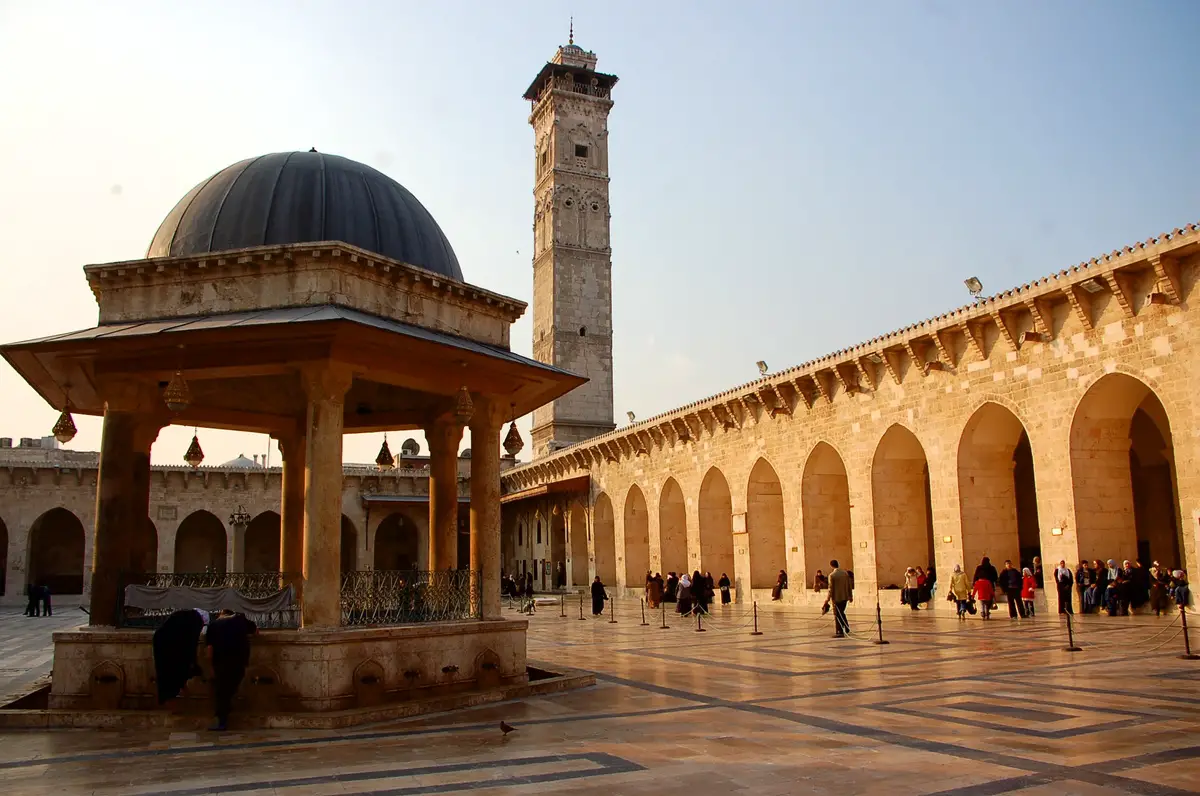
Masyaf Castle
Hama
An impressive castle on a hilltop, the former center of the Syrian Assassin sect in 1141 – end of the 13th century.
Arwad
Tartus
A small island that is fully covered with the historical Arwad town. Here is located also the impressive Arwad castle.
Deir Mar Musa (Monastery of Saint Moses the Abyssinian)
Rif Dimashq
Syriac Orthodox monastery that was developed in the middle of the 6th century. It is located in a mountainous, impressive setting. The church contains very impressive artwork – frescoes from the 11th – 12th centuries.
Margat
Tartus
An impressive fortress/castle, built by Muslims (1062) and later – Crusaders. Served as headquarters of Hospitallers and was rebuilt by them at the end of the 12th century AD.
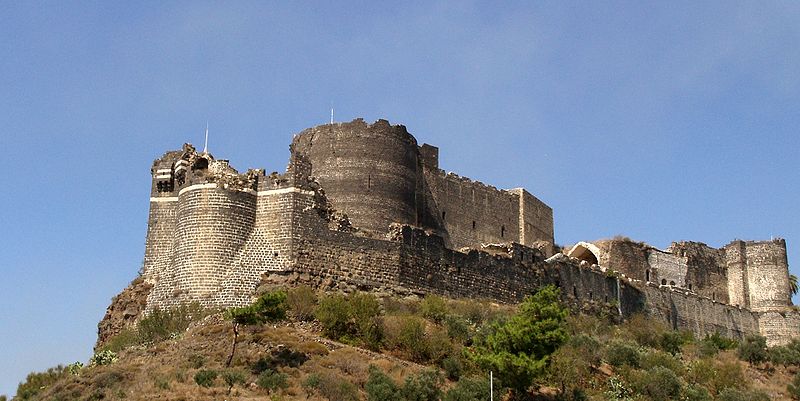
Al-Omari Mosque
Daraa
A beautiful, old mosque, built in 721 AD.
Mar Sarkis Monastery
Rif Dimashq
One of the oldest Christian monasteries, built on the site of a pagan temple. Buildings contain elements from the Byzantine period, the 5th – 6th centuries AD. In the monastery are two very old icons that belong to the oldest in the world.
 Recommended books
Recommended books
The Ayyubid Era: Art and Architecture in Medieval Syria
This new MWNF Travel Book was conceived not long before the war started. All texts refer to the pre-war situation and are our expression of hope that Syria, a land that witnessed the evolution of civilization since the beginnings of human history, may soon become a place of peace and the driving force behind a new and peaceful beginning for the entire region. Bilad al-Sham testifies to a thorough and strategic program of urban reconstruction and reunification during the 12th and 13th centuries. Amidst a period of fragmentation, visionary leadership came with the Atabeg Nur al-Din Zangi. He revived Syria’s cities as safe havens to restore order…
Lens on Syria: A Photographic Tour of Its Ancient and Modern Culture
Thousands of remarkable monuments and relics fill the land of Syria from the coast of the Mediterranean to its desert borders, dating back to the dawn of human history. The sites include: Bronze Age ruins, Roman temples and necropolises, churches and monasteries from the early Christian and Byzantine eras, Muslim forts and mosques, Crusader castles, and many more. When conflict broke out in 2011, these treasures were put at great risk, and in subsequent years, many were destroyed in battles—some were even the intentional targets of extremists.

